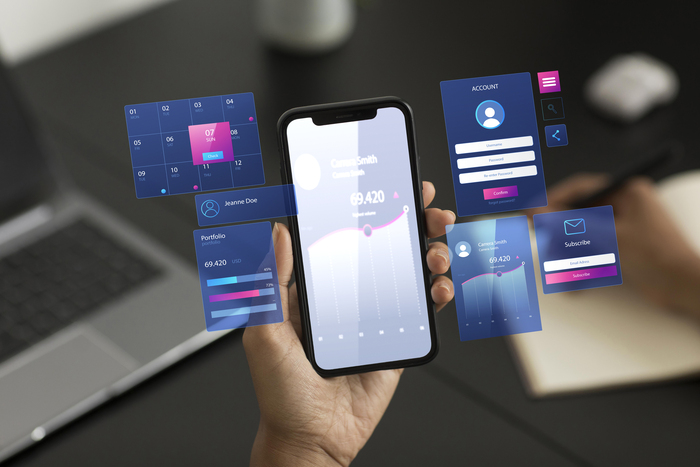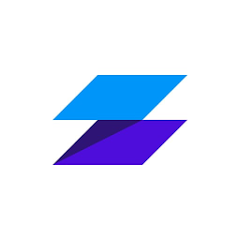Anúncios
Create a practical, visual, and efficient system to take care of your money and achieve your financial goals.

Imagine a setup where your daily tasks, appointments, and financial goals live in the same space — visually organized, intuitive, and automated.
What if, besides checking off “pay credit card bill,” you could instantly see how that payment impacts your monthly budget — without switching tabs or opening a spreadsheet?
Not only is this possible, it’s already within your reach — with tools you might already be using: Notion, Trello and Todoist.
In this article, you’ll discover how to turn these productivity apps into powerful allies for your financial life. And the best part: no complications, no magic formulas, and no need to be a financial expert.
Let’s dive in?
Productivity and Finances: A Smart Marriage
For a long time, we treated productivity and finances as separate worlds. One tool for tasks, another to track expenses, another to set goals — and in the end, nothing really connected.
But that separation is artificial. After all, how can you hit financial goals if they’re not part of your daily planning? How can you pay bills on time if the reminders aren’t integrated into your routine?
Bringing productivity and finances together goes beyond convenience. It means mental clarity, smarter decisions, less stress, and most importantly, consistency to reach your goals.
We’re not talking about “pretty spreadsheets.” We’re talking about real, functional workflows that help you act intelligently.
Notion: Your Personalized Financial Hub
Notion is like a blank canvas — and you’re the artist. It lets you build visual, dynamic dashboards where everything connects: tasks, goals, habits, records, and… your finances. With a bit of creativity, you can build a dashboard that displays:
- Your income and expenses organized by category;
- Monthly financial goals with progress bars;
- Accumulated balance and future projections;
- Tasks linked to every financial transaction.
For example, you can create a workspace called “Financial Life” and divide it into sections like:
- “Expense Tracker” with a database of entries and exits;
- “Savings Goals,” like “Save $100/month,” with progress tracking;
- “Payment Planning” with due dates, reminders, and status labels;
- “Financial Tasks,” integrated with your routine: review statements, invest, update your monthly spreadsheet.
And all this with filters, icons, emojis, and views that make sense to you. Want to level up? You can even connect bank accounts using external tools and pull in your financial data — no manual entry required.
Even if you update it manually, the impact is huge: when your finances are visible in the same place you plan your life, money management becomes a habit — not a chore.
Trello: See Your Finances Flow Like a Kanban
If you’re a visual person who likes to track processes as they evolve, Trello might be your best friend. It organizes everything in boards, lists, and cards — and it works beautifully for finances. Picture a board called “My Financial Life,” broken into lists like:
- List 1 – Fixed Expenses: rent, internet, subscriptions, gym.
- List 2 – Variable Expenses: groceries, entertainment, transport.
- List 3 – Income: salary, side jobs, returns.
- List 4 – Goals: saving, debt repayment, investments.
- List 5 – Done: everything you’ve paid or achieved.
Each item becomes a card, with due dates, amounts, color-coded labels, and checklists. You can add notes, attach receipts, or automate card movements as you complete tasks.
Want to go further? With automation tools like Butler, you can set up actions like “move card to Done when checkbox is marked.” You can even integrate Trello with other platforms to create a true financial timeline — visual, accessible, and organized.
Todoist: Turn Finances Into Clear, Actionable Tasks
If your organization style is built around simple lists and priorities, Todoist is ideal for turning your finances into a sequence of clear, actionable tasks. Start by creating a dedicated project named “Finances,” where you can add tasks like:
- “Pay electricity bill – by the 10th”;
- “Transfer $60 to savings”;
- “Update expense spreadsheet”;
- “Review bank statement”;
- “Plan next month’s budget.”
Each task can include:
- Priority levels (low, medium, high);
- Labels such as
bills,savings,investments; - Recurring dates (e.g. every 5th, monthly).
This way, you treat your finances like an active project that requires attention and regular follow-up — not something you only think about when your balance is low.
You can also integrate Todoist with Notion or Google Sheets to generate reports, automate updates, and keep everything in sync.
Integrations and Automations: Simplifying Financial Control
The real magic happens when all these tools start talking to each other. There are automation platforms that help you connect Notion, Trello, and Todoist with other systems — like bank accounts, spreadsheets, and financial dashboards.
With automation solutions like Zapier or Make, you can:
- Automatically create a Todoist task every time a new expense is logged;
- Update Trello with new financial goals submitted via form;
- Sync bank transactions to your Notion finance dashboard;
- Generate payment reminders based on due dates set in your systems.
These integrations save time, reduce human error, and ensure that your financial planning doesn’t stay on paper — it lives, adapts, and grows with you.
How to Keep This Integration Sustainable
Combining productivity and finance is powerful — but it works best with consistency and simplicity. Here are some tips to stay on track:
- Start small: Don’t aim for the perfect system right away. Build a basic structure and improve it gradually.
- Weekly reviews: Take 15 minutes a week to check your data, adjust goals, and mark what’s done.
- Set realistic goals: Define targets that match your current lifestyle — and celebrate each achievement.
- Avoid information overload: The more visual and lightweight your system, the more pleasant it is to use.
- Turn it into a habit: When finances are built into your daily flow, it takes less effort — and yields better results.
Conclusion: Smarter Finances, One Step at a Time
When productivity and finances work together, you gain more than clarity — you gain autonomy, strategy, and peace of mind. Stop treating your financial life as a separate problem and start integrating it into your existing systems. Tools like Notion, Trello, and Todoist make that integration seamless, visual, and empowering.
But if you’re looking for something even more focused — a platform designed specifically for personal finance, with features ready to use and built to simplify your routine — you’re going to love what’s next.
In our next article, we’ll introduce you to Zenfi — a smart, intuitive solution to track your financial goals, manage expenses, and organize your money without the overwhelm.
Ready to take the next step in your financial journey? Click below to discover how Zenfi can transform your relationship with money.
Recommended Content
